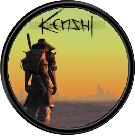Template:Glossary
More actions
| This template uses TemplateStyles: |
Usage
The template {{glossary}} (a.k.a. {{glossary start}} or {{glossary begin}}) is used with {{glossary end}} to explicitly bracket a glossary or glossary-like description list (also called a definition list or association list), especially in a template-structured glossary, although such lists can be used more generally. This is required (as a technical matter) for template-structured glossaries, and is good practice anywhere description/definition lists are used for glossaries. The template pair invoke the <dl>...</dl> description list HTML element. Unfortunately, the "{{dl}}" mnemonic is not available as a redirect as of this writing.
The pair of templates incidentally prevent Wikipedia's MediaWiki software engine from auto-creating redundant definition list code (<dl>...</dl>) around terms and definitions if they have blank lines between them, as they often do, especially in non-structured glossaries.
Typical usage:
{{glossary}} {{term}} {{defn}} {{glossary end}}
Parameters
|id=can be used to assign a one-word ID name to the glossary. This can be used as a#idlink target, and could have other metadata uses.|style=will pass CSS styling on to the<dl>element. I.e., this styles the definition list itself, as a container, not the individual terms and definitions with it. There is rarely any reason to do this.|class=will pass one or more space-separate CSS classes on to<dl>element, in addition to the automatically included classglossary. There is rarely any reason to do this.
Examples
This shows both a very simple then a rather complex instance in a structured glossary (including an entry with a block quotation, which inside a definition has reduced vertical margins compared to the standard display of {{blockquote}}, due to TemplateStyles):
| Markup |
|
|---|---|
| Renders as | A–M
|
Scope
This family of templates, like the underlying definition-list code, is primarily intended for definitional uses, but can have other applications. The HTML 4.01 Specification itself says:
| “ | Definition lists ... generally consist of a series of term/definition pairs (although definition lists may have other applications). Thus, when advertising a product, one might use a definition list:
|
” |
Thus, editors should feel free to use definition-list markup as an alternative to bulleted or numbered lists when the material is well-suited to definition-list presentation.
See also
{{glossary}}a.k.a.{{glossary start}}or{{glossary begin}}– Half of a template pair; uses<dl>with a class to open the structured glossary definition list that{{glossary end}}closes.{{glossary end}}– The other half of this template pair; uses</dl>to close the definition list that{{glossary}}opens.{{term}}– The glossary term to which the{{defn}}definition applies; a customized<dt>with a class and an embedded<dfn>.{{defn}}– The definition that applies to the{{term}}; uses<dd>with a class{{ghat}}– a hatnote template properly formatted for the top of a{{defn}}definition{{glossary link}}– meta-template for creating shortcut templates for linking to definitions in specific glossaries- Wikipedia:Manual of Style/Glossaries
